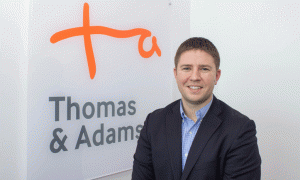How to get a firm footing in foundations
The need for reliable and cost-effective technologies in foundations is growing stronger

As important as a building’s design and structure are, there’s no denying that what lies underneath is just as crucial. Technologies for building foundations have evolved and improved over the years, and alternatives to traditional deep piling methods have emerged. But among contractors and government entities, there remains a tendency to rely on the familiar, perhaps to be safe rather than sorry.
Big Project ME decided to speak to professionals to find out where the industry is heading and what alternative solutions can be offered to deep foundations.
For the high-rise construction projects increasingly dominating skylines across the country, piling remains a must. The most common method in Dubai remains rotary bored piling, says Peter Titus, managing director of Total Foundation Solutions (TFS), a company supplying specialist equipment for deep foundations and piling across the GCC.
However, alternative piling methods such as continuous flight auger (CFA) are becoming more widely used, due to their cost-effectiveness, Titus says. “In Western Europe, the United States, parts of South America, CFA is the main method you would use because it is so much cheaper. Everyone is trying to trim the cost of their overall building, not just the foundations. And they’re looking to find ways to do this faster and cheaper, so CFA is the main method used in France, Spain & the UK.”
CFA piles are formed by drilling a continuous flight auger into the ground. The sides of the hole are supported at all times by the soil-filled auger, eliminating the need for temporary casing or bentonite slurry. Upon reaching the required depth, concrete is pumped down the hollow stem as the auger is steadily withdrawn, and a reinforcement cage is placed into the wet concrete after withdrawal of the soil by the auger.
In addition to being cheaper, a key advantage of CFA is that it’s much faster, Titus notes. “The time you spend making each pile is reduced. You can auger the pile, pump the concrete, lift the cage and drop it in, say, one fourth or one fifth of the time it would take you to excavate using a kelly bar system.”
However, CFA does pose limitations in terms of the depth and diameter of the piles. CFA piles can be drilled down to 41 metres deep and 1.5m in diameter using high torque specialist CFA rigs. “If you get very tall buildings like the Burj Khalifa, you have piles much deeper and much larger in diameter than this can provide,” Titus explains, adding that in this case, the rotary bored piling machine works best. Micropiling machines are also becoming more popular, he points out.
“All these different machines are used to be able to create holes in the ground, temporarily or permanently,” he says. The problem is that soil is not uniform or homogenous. Additionally, in coastal areas the water table is quite high, and once a contractor excavates below it, water begins to appear. While contractors have traditionally overcome the issue by dewatering using pumps, this is quite an expensive process.
A way around this is by casting a jet grout bottom plug. Jet grouting is a technique of creating a pile using in-situ soil and grout mixed together under high pressure to create a soil-reinforced column. Jet grouting improves the soil’s mechanical characteristics while decreasing permeability, Titus notes. A jet grout bottom plug can be created well below ground level by casting multiple short jet grout columns in an overlapping arrangement to cut off the influx of water into a future excavation.
Commenting on how the market is shaping up, Titus says that while piling and diaphragm walling machines were mainstays in the past, micropiling machines are more in demand now as construction needs evolve.
“We have a lot of buildings here which are valuable and need to be retained. Sometimes some of them have had some issues with settlement or differential settlement.” Additionally, some clients are also looking to extend existing buildings, which will need foundations to be strengthened.
“The trend is heavily moving towards micropiling, so to have something small enough to put in through a building, adjacent to a building, under a building, involves using smaller machines. The same machine can create a jet grout column, when used with a very high pressure pump.”
These techniques are becoming popular as the market realises that drilling large piles isn’t always necessary, he adds. “Definitely that’s the new demand, where we have buildings that might require extensions or remedial work if there’s some problem. There is more and more understanding that perhaps you don’t have to give a large diameter pile under a villa.”
Ground Improvement
It is this understanding that has spurred the rise of ground improvement techniques as a viable alternative to deep foundations, when piling may not be entirely necessary. One company specialising in soil improvement techniques is Menard Vibro, which offers cost-effective alternatives to deep piles or deep concrete footings.
“Quite often, the prices that are given or the recommendations that are given for piling or for certain types of foundations are not necessary because of what we do, which is to offer an alternative,” explains Jason Redgers, regional business development manager at Menrad Vibro.
The firm offers a host of services including rapid impact compaction, dynamic compaction, vibro compaction, vibro replacement (with stone columns) and vertical drains. The improvement methods can be broadly classified as either using additional material, in which the soil is reinforced; or without additional material, with soil compacted.
Redgers reiterates that for high-rises, piling is the right option. “But certainly, when they’re looking at warehouses, villas, residential areas, even mosques and lots of industrial units, piling is not necessary because of the loads of the building. It can be done by improving the bearing capacity and the settlement control of the ground.”
As the majority of soils in the UAE and GCC are sandy, the recommended ground improvement techniques are vibro compaction or dynamic compaction. However, in Oman and parts of Qatar where silt or clay are present in the soil, one should consider stone columns or dynamic replacement, Redgers notes.
In the vibro compaction technique, loose granular soils are compacted by penetration of a vibratory probe or vibroflot. Based on results from a test zone, Menard Vibro determines the optimal probe frequency and power as well as the required period of vibration for the site. The technique increases soil bearing capacity while reducing total and differential settlement. It is possible to treat up to depths of 70m, according to the company’s website.
The sand on the Palm islands was treated with vibro compaction, Redgers says. “When they placed this sand, it was four metres above the water. Then we did the vibro compaction, and after that it was only three metres above the water, because you compacted the sand so you made it denser, you made it stronger.”
In terms of the benefits of ground improvement techniques compared to piling, Redgers says they are faster, cheaper and better for the environment. “It’s a more value-engineered option. You are using less resources, so you have no concrete and no steel. From a cost point of view it’s better, but also from an environmental point of view, you don’t have the extra transport and the extra use of diesel and petrol and many materials on-site.” Additionally, when drilling piles, the soil comes to the surface and needs to be taken away. “When you do ground improvement, this doesn’t happen. So there is less truck movement, less use of aggregates, less use of steel, so it’s all around a better solution. It’s technically better, it’s environmentally better, and it meets the requirements that are needed.”
Moreover, the foundation doesn’t need to be as heavily reinforced as when wide piles are used, further lowering costs.
As good as it sounds on paper, are contractors and government entities seeing the advantages? Redgers admits this can be a problem. “What we suffer from here is because the municipalities or the approving bodies have seen many problems from poor quality in the past, they are very conservative in any method they build now or they don’t understand.” Foundations, therefore, tend to be overdesigned and thus “overpriced and over-engineered”.
Titus agrees that foundations are typically overdesigned, adding that this is also due to the uncertainty of soil. “We put much higher factors of safety on the design of foundations than we do on buildings, because of the soil being non-homogenous. So engineers are very careful. The fact is most engineers will tell you that foundations are a little bit over-designed because of the uncertainty factor of soil.”
Another challenge, Redgers notes, is that due to the wide mix of cultures and educational backgrounds, many in the industry stick to what they know and are unwilling to embrace change. “There are new techniques, and something that you learned 30 years ago at university is now changed. Everything is progressing,” he insists.
Redgers admits, however, that the process will take some time to become the norm, as with any other new technology, because people will be sceptical at first. “It happened in Europe 50 years ago when these methods were used, and in the US. It’s the same learning curve that everybody is going through, and as more people come here from different places and experiences, it becomes more accepted.”
Ground improvement: How to go about it
When a client decides they want to use a ground improvement method, they approach a company like Menard Vibro and explain what they’re looking to build.
Initially, a site investigation is carried out to determine the kind of soil present, says Jason Redgers. Once this has been determined, the company can treat the area to deliver specified results, in line with local or federal requirements.
The time frame varies according to the project, Redgers points out. “It will depend on how big the project is, because every rig can produce so much treatment per day. Typically for the dynamic compaction, you would treat 1,000sqm in a day. for the stone columns, maybe you’d treat 500sqm in a day. And then as a form of other compaction, rapid impact compaction, we would do 3,000sqm in a day. Depending on how you need to treat and the size of the area that you have, these are typical average figures.”
“When they have large projects, they employ us first and then they can hand over their site to their main contractor, who can just build with no worry.”
On smaller developments, the company works directly for main contractors. It offers them the option of working according to the specifications of the appointed consultant, or working on a design and build basis with full warranties.

























